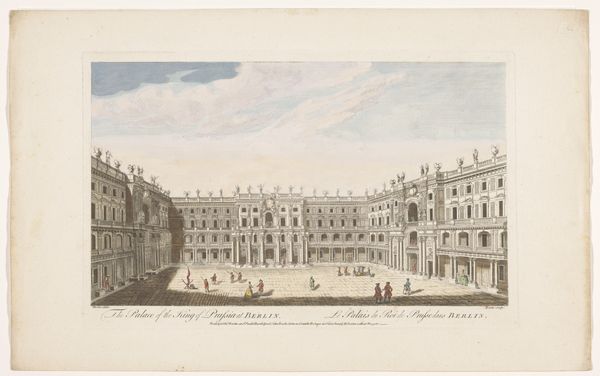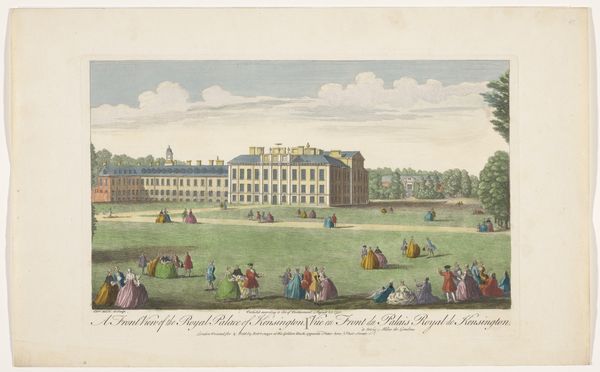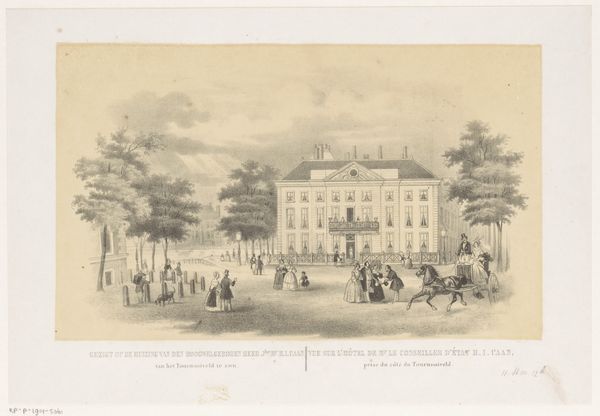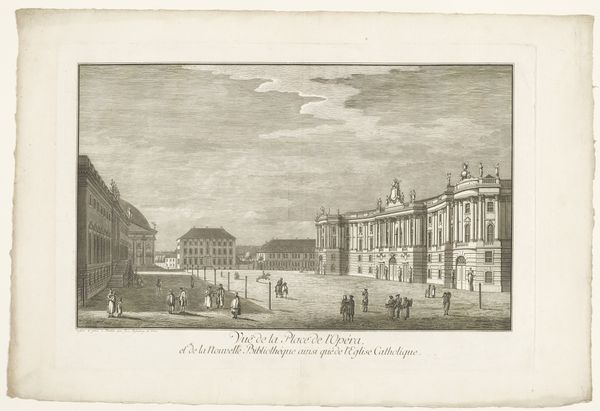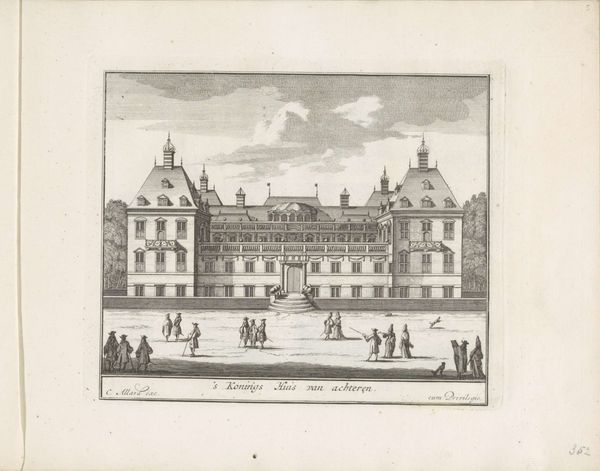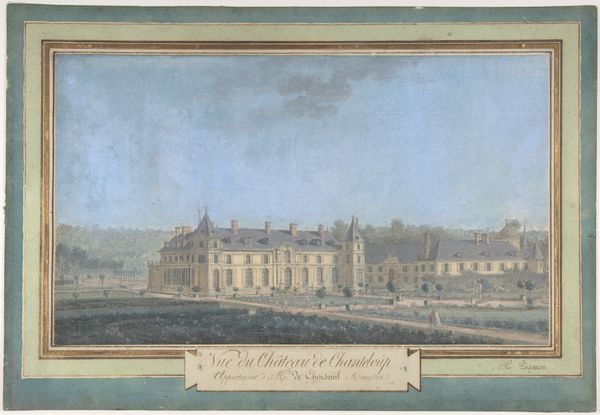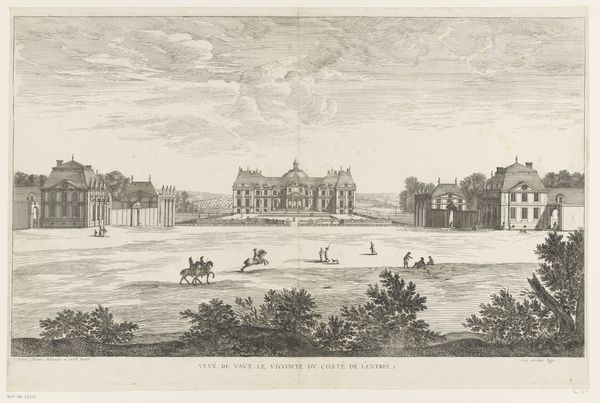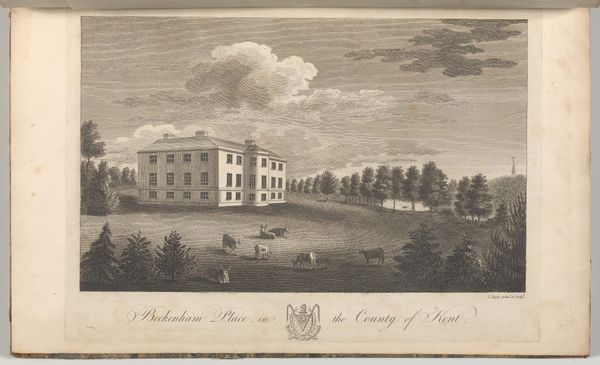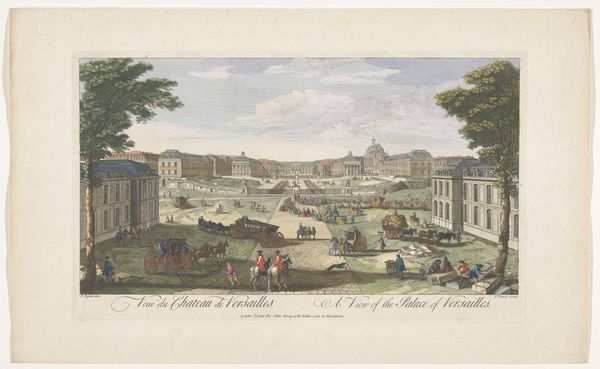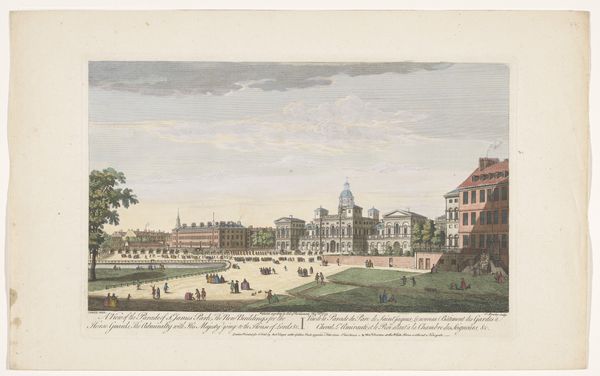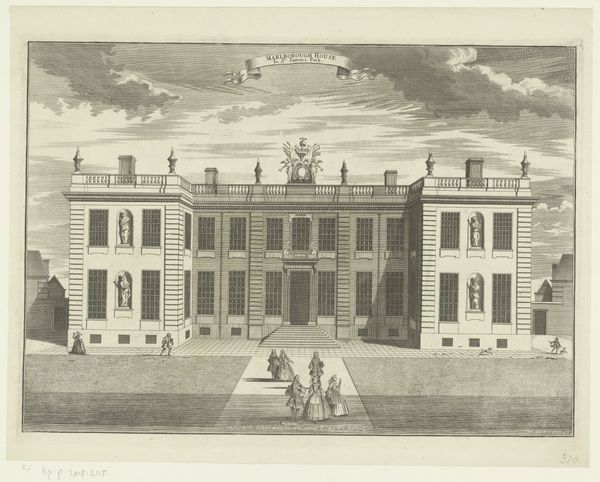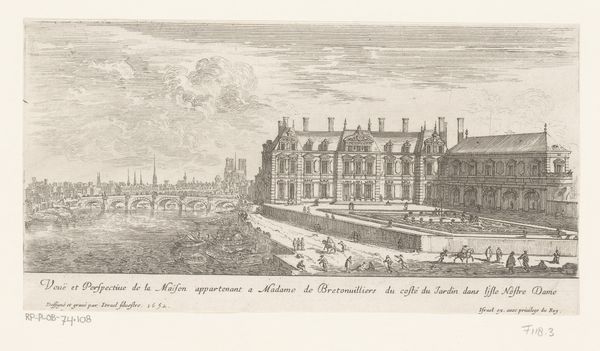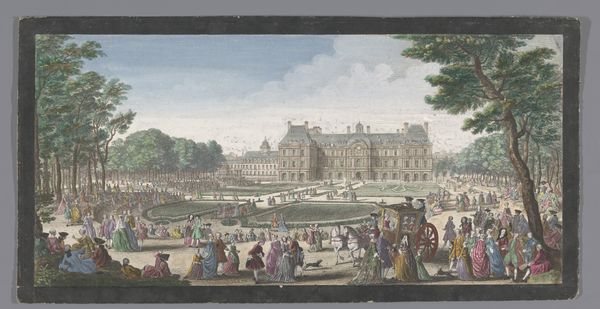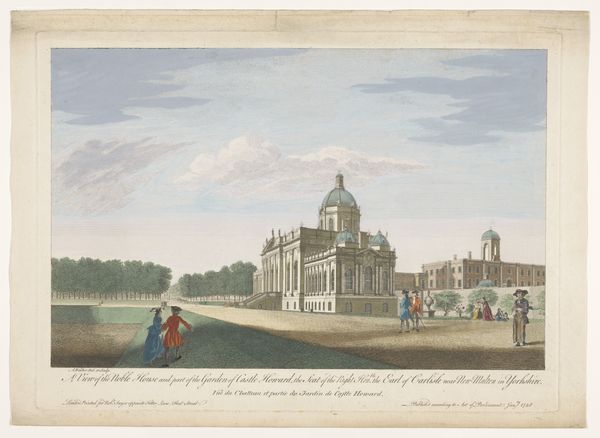
Gezicht op de voorzijde van het Berliner Stadtschloss te Berlijn 1754 - 1755
0:00
0:00
robertsayer
Rijksmuseum
painting, print, watercolor, architecture
#
water colours
#
baroque
#
painting
# print
#
landscape
#
watercolor
#
cityscape
#
watercolour illustration
#
watercolor
#
architecture
Dimensions: height 299 mm, width 406 mm
Copyright: Rijks Museum: Open Domain
Curator: Here we have "Gezicht op de voorzijde van het Berliner Stadtschloss te Berlijn," or "View of the Front of the Berlin City Palace," created between 1754 and 1755. It’s attributed to Robert Sayer and utilizes watercolor and printmaking techniques. Editor: My first impression is one of muted grandeur, like a faded memory of a once vibrant court. It has an ethereal quality, despite its rigid architectural subject matter. Curator: Absolutely, and notice how Sayer juxtaposes the imposing Baroque architecture with these almost miniature figures and carriages populating the foreground. What might that tension tell us? Editor: For me, it highlights the disparities in power and privilege that Baroque architecture often obscures. These palaces weren't built in a vacuum, you know? They’re physical manifestations of societal structures, resting upon a foundation of potentially exploited labor and resources. The figures become symbolic of the ordinary lives orchestrated beneath the crown. Curator: I agree. The soft, almost dreamy quality of the watercolors creates a gentle remove. There is a quiet quality in the application, almost meditative, it’s less of a bombastic declaration and more of a quiet reflection on power. I am fascinated by the use of print alongside watercolor, what do you think about that? Editor: This combination offers the precision of mass reproduction meeting the individuality of hand-coloring. The print gives form to an empire that the artist gently colors to make it palatable, but for whom? Curator: Perhaps for a burgeoning middle class with aspirations, keen to consume images of royal life. Or for export, selling the idea of Prussian power abroad. The choice of medium itself becomes part of the narrative. Editor: It’s this intersection—where the artistic choices meet historical realities—that ignites my thinking. It compels us to look closer, ask tougher questions, and examine our roles in upholding and critiquing the architectures around us, both physical and societal. Curator: I think it's safe to say it makes me wonder how we continue to reimagine such architectural structures today, and, even perhaps, what that says about our own aspirations and ideas of grandeur. Editor: Indeed. It also makes me reflect upon how architecture and power interact, even today. Whose stories do our cityscapes tell? It is something worth thinking about when considering what kinds of spaces we wish to build going forward.
Comments
No comments
Be the first to comment and join the conversation on the ultimate creative platform.
